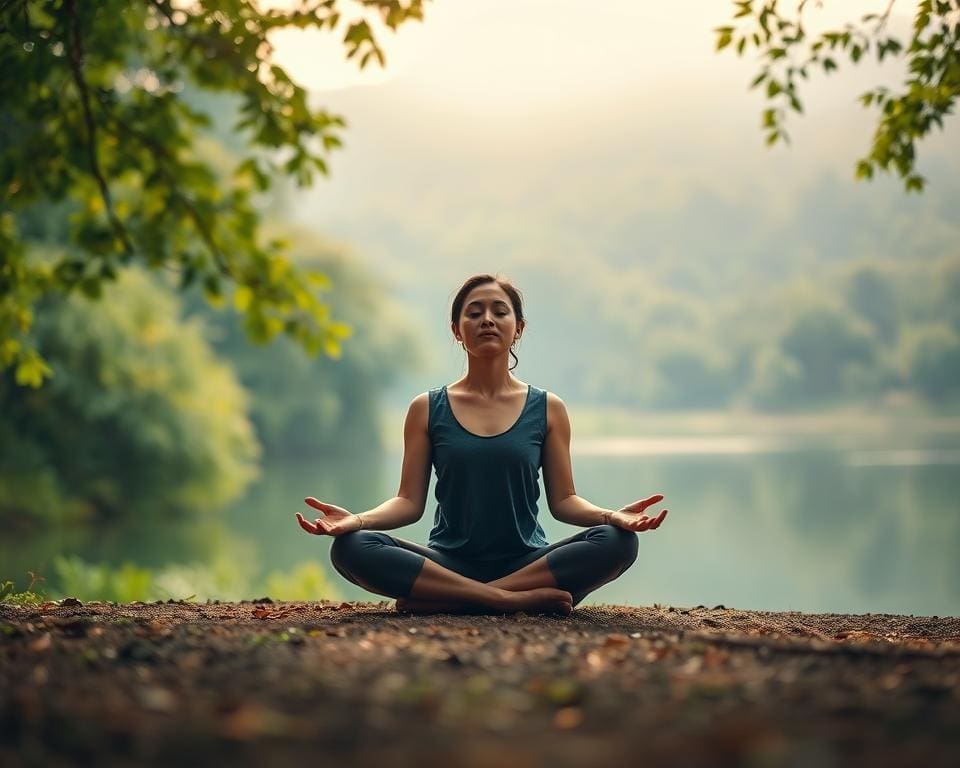In our fast-paced world, the concept of mindfulness has emerged as a vital practice for enhancing daily life. Mindfulness, at its core, is the art of being fully present and engaged in the moment, allowing us to cultivate mindfulness and experience life with clarity and serenity. It offers significant benefits, from reducing stress to improving emotional regulation, thereby promoting overall well-being. As we delve into this article, we will explore practical mindfulness tips that can be easily integrated into your routine, paving the way for a more tranquil and focused existence.
Understanding Mindfulness and Its Importance
Mindfulness serves as a powerful approach to enhance emotional well-being and foster mental clarity. With a growing body of research, understanding mindfulness has become increasingly crucial in today’s fast-paced world. This practice encourages individuals to engage fully with the present moment, recognising their thoughts and sensations without judgement.
What is Mindfulness?
Mindfulness definition centres around maintaining an active awareness of our internal and external experiences. The essence lies in observing thoughts, feelings, and bodily sensations as they occur, enabling a deeper connection to the present moment. Established by pioneers in mindfulness practices such as Jon Kabat-Zinn, this concept has been embraced widely for its transformative impact on daily life.
Benefits of Practising Mindfulness
Engaging in mindfulness practices yields numerous benefits of mindfulness, contributing to a healthier mind and body. Among these advantages, one can observe:
- Reduced stress levels and improved emotional regulation
- Enhanced focus and mental clarity
- Stronger interpersonal relationships
- Greater resilience in coping with life’s challenges
- Boosted immune system functioning and potentially lower blood pressure
These improvements illustrate the mindfulness effectiveness for promoting holistic wellbeing, allowing individuals to navigate their daily experiences with grace and composure.

How to Find More Mindfulness in Everyday Life
Integrating mindfulness into daily life creates a foundation for enhanced well-being and awareness. Simple strategies can seamlessly incorporate mindfulness habits into everyday routines. By making small adjustments, individuals can cultivate a mindfulness space that promotes home tranquillity.
Integrating Mindfulness into Daily Routines
One effective method for integrating mindfulness is through mindful breakfast practices. Focus on the taste, texture, and aroma of food, transforming this daily routine into a moment of appreciation. Setting reminders for short mindfulness sessions aids in maintaining these practices throughout the day. Utilising apps like Headspace and Calm can offer guided sessions that support the establishment of meaningful mindfulness habits.
Creating a Mindful Environment
Creating a mindful environment is essential for cultivating awareness. Incorporating elements such as indoor plants and maximising natural light enhances a calming atmosphere that fosters home tranquillity. Decluttering spaces significantly contributes to this serene mindset, as studies have shown that a tidy environment decreases stress levels, making it easier to engage in mindfulness practices.
Mindfulness Techniques to Cultivate Awareness
Incorporating mindfulness techniques into daily life can significantly enhance overall well-being. Two effective methods are deep breathing exercises and the body scan exercise. Each technique offers unique benefits that can help individuals cultivate awareness and achieve relaxation.
Deep Breathing Exercises
Deep breathing serves as a fundamental mindfulness practice that allows individuals to centre their minds and bodies. This technique involves inhaling deeply through the nose, holding the breath for a brief moment, and exhaling slowly through the mouth. Engaging in deep breathing can reduce feelings of anxiety and promote overall relaxation. Taking a few minutes each day to practice this technique helps create a calm space in a hectic world.
Body Scan for Relaxation
The body scan exercise is an effective mindfulness technique designed to promote relaxation and awareness of physical sensations. To perform this method, find a comfortable position, preferably lying down, and sequentially direct your consciousness through each part of the body, paying attention to any feelings or sensations. By focusing on each area, individuals can enhance their mindfulness practice and elevate their sense of relaxation.
Mindfulness Tips for Busy Lives
In our increasingly fast-paced world, finding moments of mindfulness can be challenging yet rewarding. Implementing mindfulness tips can help cultivate a sense of peace amidst the chaos. Embracing short mindfulness breaks throughout the day is one effective approach to enhance well-being and address the stresses of busy lives.
Short Mindfulness Breaks
Incorporating short mindfulness breaks into your routine revitalises the mind and spirit. Consider setting aside a few minutes to:
- Close your eyes and take deep breaths, focusing on the rhythm of your breath.
- Engage in a brief body scan to release tension and become aware of physical sensations.
- Observe your surroundings, paying attention to details that often go unnoticed.
Such simple techniques during busy lives can be transformative. Research indicates that even brief opportunities to practise mindfulness can significantly enhance attention and task performance.
Mindful Commuting Strategies
Many people experience daily commutes that can be stressful. Applying mindfulness during travel transforms a mundane journey into a moment of reflection and peace. To practise mindful commuting, try the following strategies:
- Focus on your breath, using it as an anchor to ground yourself while driving or on public transport.
- Engage in commute awareness by noticing the sights, sounds, and smells around you.
- Listen to calming music or guided meditations to cultivate a peaceful mindset.
These techniques not only alleviate stress but encourage deeper engagement with the present moment.
Practising Gratitude
Practising gratitude can significantly enrich your mindfulness journey. Keeping a gratitude journal allows you to reflect on the positives in daily life. Consider noting:
- Three things you are thankful for each day.
- Moments that brought you joy or satisfaction.
- Acts of kindness you encountered or contributed to.
These reflections cultivate a mindset of mindfulness gratitude, which research suggests is linked to improved emotional health and overall well-being.
Developing Mindfulness Habits
Embracing mindful living begins with developing mindfulness habits that resonate personally. Setting intentions is vital to ensure clarity and direction in this journey. By identifying what mindfulness signifies on an individual level, one can embark on a transformative path. Individuals may find it beneficial to articulate their goals, creating a daily reminder of their commitment.
Setting Intentions for Mindfulness
Setting intentions acts as a guiding light in the pursuit of mindfulness. This process allows individuals to clarify their aspirations, whether it’s to cultivate patience, enhance focus, or embrace gratitude. Writing intentions down reinforces the commitment and enhances the likelihood of following through. To truly incorporate these intentions, consider the following:
- Reflect regularly on your intentions and adjust them as necessary.
- Create affirmations that encapsulate your goals, serving as daily reminders.
- Share your intentions with supportive friends or family to create accountability.
Daily Journaling for Reflection
Daily journaling is an essential tool for fostering mindfulness reflection. Engaging in this practice encourages individuals to explore their thoughts and feelings, contributing to deeper self-awareness. By dedicating a few minutes each day to document experiences, one enhances their emotional intelligence and nurtures personal growth. Key elements to consider when journaling include:
- Be consistent with your journaling routine to establish a habit.
- Focus on the positives by noting what brings joy and peace during your day.
- Reflect on challenges encountered, using them as opportunities for learning.
Mindfulness Exercises for Different Situations
Mindfulness exercises can be effectively tailored to fit various specific situations, making the practice both versatile and impactful. For instance, during high-pressure moments at work, engaging in a brief mindful breathing exercise can help centre your thoughts and alleviate stress. This adaptable mindfulness technique fosters clarity and focus, enabling individuals to navigate challenges with a calmer approach.
In family interactions, practising self-compassion techniques can transform potentially tense situations into opportunities for growth. When emotions run high, taking a moment to breathe deeply and acknowledge one’s feelings allows for a more compassionate response. This shift not only enhances personal interactions but also models mindfulness for others in the family, promoting a more harmonious environment.
Social gatherings can often induce feelings of anxiety, yet adaptable mindfulness techniques can provide comfort in these settings. Visualisation exercises, where you imagine a peaceful scene or a supportive figure, can effectively reduce discomfort and enhance feelings of belonging. By incorporating these mindfulness exercises into various situations, individuals can cultivate a greater sense of presence and connection, no matter the context.









